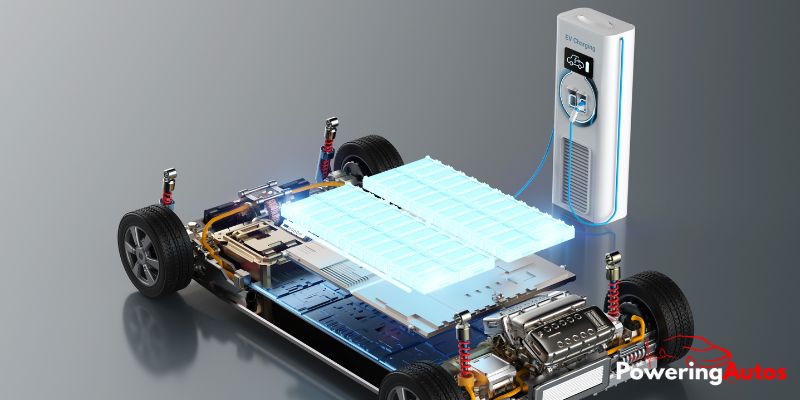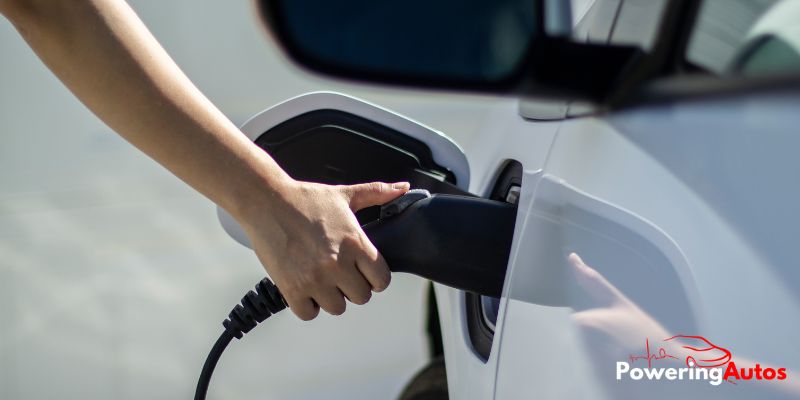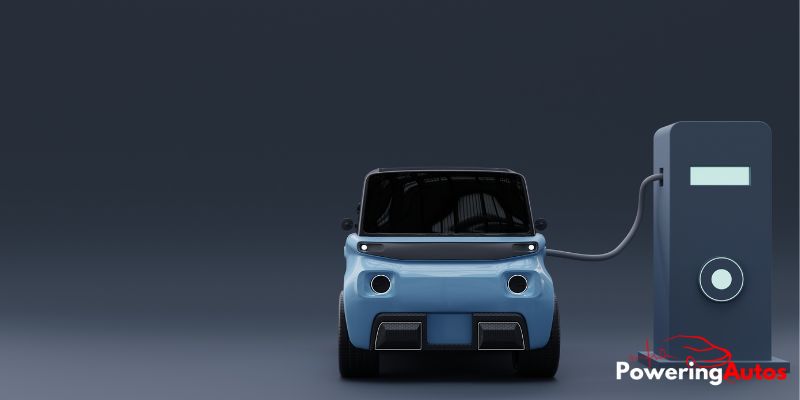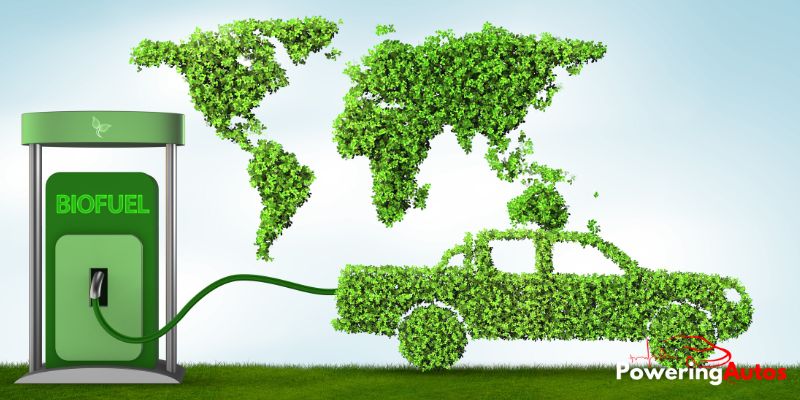Hybrid vehicles typically charge their batteries through a process called regenerative braking, converting kinetic energy back into electrical energy during deceleration. However, plug-in hybrid vehicles can also be charged using a standard power outlet or a dedicated charging station. The charging time varies based on the power source and the vehicle’s battery capacity. Always refer to the vehicle’s user manual for specific charging instructions.
As someone who’s spent countless hours under the hood of both traditional and hybrid vehicles, I’ve developed a deep appreciation for the intricate dance of technology that makes these eco-friendly machines tick. It’s truly fascinating, and I can’t wait to share my insights with you.
Now, one question I often get asked is, “How do you charge a hybrid battery?” It’s a great question, and the answer is a bit more complex than you might think. You see, hybrid vehicles have a unique way of keeping their batteries juiced up, and it’s not as simple as just plugging them into an outlet (although, with some models, that’s part of it).
In this post, we’re going to dive into the nitty-gritty of how hybrid batteries get their charge, and I’ll share some tips and tricks I’ve picked up along the way. So, buckle up and get ready for a fun and informative ride!
What is the basic concept of hybrid vehicles?

Now that we’ve set the stage, let’s dive deeper into the world of hybrid vehicles. We’ll start by unraveling the mechanics behind these innovative machines, beginning with an explanation of how hybrid vehicles work. Buckle up, as we’re about to embark on an electrifying journey!
how hybrid vehicles work
Hybrid vehicles are a fascinating blend of traditional internal combustion engines and electric motors. They are designed to maximize efficiency and reduce emissions. The beauty of these vehicles lies in their ability to switch between or combine the two power sources to achieve maximum efficiency.
In a hybrid vehicle, the internal combustion engine and the electric motor work in harmony. The electric motor provides a boost during acceleration, and the internal combustion engine powers the vehicle at higher speeds when it’s most efficient. The battery that powers the electric motor is charged through a process called regenerative braking, which captures and converts energy during braking.
There are four main types of hybrid vehicles: Mild Hybrids, Full Hybrids, Plug-In Hybrids, and Electric Vehicles with Range Extender Hybrids.
- Mild Hybrids: These vehicles use the electric motor to assist the internal combustion engine, especially during acceleration. The electric motor in a mild hybrid cannot power the vehicle on its own.
- Full Hybrids: These vehicles can operate on the electric motor alone, the internal combustion engine alone, or a combination of both. Full hybrids are further divided into Parallel and Series hybrids. In Parallel hybrids, the wheels can be powered by the engine, the electric motor, or both. In Series hybrids, the wheels are powered solely by the electric motor, with the gasoline engine acting as a generator.
- Plug-In Hybrids: These vehicles can be charged externally, allowing them to have a greater electric-only range than full hybrids.
- Electric Vehicles with Range Extender Hybrids: These are primarily electric vehicles equipped with a small gasoline engine that acts as a backup when the battery runs out.
The role of the hybrid battery in these vehicles
The hybrid battery plays a crucial role in the operation of a hybrid vehicle. It stores energy for the electric motor, which is used to power the vehicle during low-speed operations, thus saving fuel and reducing emissions.
The battery gets charged in two ways: through regenerative braking, where energy is captured and converted during braking, and through the internal combustion engine, which generates electricity to charge the battery when it’s running efficiently.
In Plug-In Hybrids, the battery can also be charged externally, allowing these vehicles to operate on electric power alone for longer distances.
In summary, the hybrid battery is a key component that enables the efficient operation of hybrid vehicles, contributing to their fuel economy and low-emission characteristics.
Do Hybrid Vehicles Need to Be Plugged in to Charge?
As someone who’s been around the block with hybrid vehicles, I can tell you that one of the most common misconceptions is that all hybrids need to be plugged in to charge. Let’s clear that up right away.

the Self-Charging Nature of Most Hybrid Vehicles
Most hybrid vehicles are self-charging, meaning they generate their own electricity to recharge the battery. This is typically achieved through a process called regenerative braking. When you apply the brakes in a hybrid vehicle, the electric motor works in reverse to slow the car down, generating electricity in the process. This electricity is then used to recharge the battery.
The battery also gets charged when the car is coasting or when the gasoline engine is running and producing more power than needed. This is why hybrids are so efficient in city driving where there are lots of stop-and-go situations.
Plug-In Hybrid Vehicles and Their Charging Needs
Now, there’s another type of hybrid vehicle called a plug-in hybrid. These vehicles have larger batteries and can be driven on electric power alone for a certain distance, usually between 20 to 50 miles. Once the battery is depleted, the gasoline engine kicks in, and the vehicle operates like a regular hybrid.
Plug-in hybrids, as the name suggests, need to be plugged into an external power source to recharge their batteries. This can be a regular household outlet or a dedicated charging station. The charging time varies depending on the power source and the vehicle, but it can range from a few hours to overnight.
Moreover, plug-in hybrids offer the benefits of electric driving without the range anxiety associated with fully electric vehicles. You can do your daily commuting on electric power and still have the gasoline engine for longer trips.
So, to answer the question, not all hybrid vehicles need to be plugged in to charge. Regular hybrids charge their batteries on their own, while plug-in hybrids require an external power source. It’s all about finding the right balance between efficiency and convenience for your specific needs.
In the next section, we’ll dive deeper into the world of plug-in hybrids and explore how to charge them at home. Stay tuned!
How to Charge a Hybrid Battery?
Having understood the basics of hybrid vehicles, it’s time to delve into the specifics of their power source – the hybrid battery. Let’s start with a step-by-step guide on charging a plug-in hybrid vehicle, a process that’s as easy as plugging in your smartphone, but with a few extra steps. Ready to power up? Let’s get started!

Step-by-step guide on charging a plug-in hybrid vehicle
As someone who’s been around the block with hybrid vehicles, I can tell you that charging a plug-in hybrid (PHEV) is as easy as charging your smartphone. Here’s a simple step-by-step guide:
- Find a charging station: This could be a public charging station, a 120-volt household outlet, or a fast-charging home station. The latter two are especially handy if you have a garage or a dedicated parking spot.
- Plug in the charger: Your PHEV will come with a portable charging cord. Simply plug one end into the charging station and the other end into the charging port of your vehicle.
- Wait for it to charge: Charging time will depend on the power source and the specific model of your vehicle. A standard household outlet will take longer, while a fast-charging home station can significantly speed up the process.
Remember, the convenience of charging at home can’t be overstated. With a home charging station, you can simply plug in your vehicle overnight and wake up to a fully charged battery. It’s like having a gas station in your own home!
The role of regenerative braking in charging a hybrid battery
Now, let’s talk about one of my favorite features of hybrid vehicles – regenerative braking. This is a clever system that recovers energy that would otherwise be lost during braking and uses it to charge the hybrid battery. It’s one of the reasons why hybrid vehicles are so fuel-efficient.
When you apply the brakes in a hybrid vehicle, the electric motor works in reverse to slow the vehicle down. In the process, it generates electricity, which is then fed back into the battery. This means that every time you brake, you’re actually helping to charge the battery!
In fact, with standard hybrids and many PHEVs, the battery self-charges as you drive around, thanks to regenerative braking and the vehicle’s internal combustion engine. So, in many cases, you won’t even need to plug in your vehicle to charge it. Now, isn’t that neat?
In conclusion, charging a hybrid battery is a straightforward process, and with the added bonus of regenerative braking, maintaining a charged battery is easier than you might think. Whether you’re driving a standard hybrid or a PHEV, you’re part of a sustainable future in transportation. And trust me, it’s a great place to be!
The Lifespan of a Hybrid Battery
As someone who’s been around the block with hybrid vehicles, I can tell you that the lifespan of a hybrid battery is a topic of much interest.
The longevity of hybrid batteries
Hybrid batteries are designed to last a long time, but “long” can be a relative term. The lifespan of a hybrid battery can vary greatly depending on the make and model of the vehicle, as well as how the vehicle is driven and maintained. Some hybrid batteries can last for over 150,000 miles with proper care.
In my experience, most hybrid batteries will last for the life of the vehicle. However, like any battery, they will eventually wear out and need to be replaced. The good news is that many manufacturers offer warranties on their hybrid batteries. For instance, Toyota offers a warranty of 8 years or 100,000 miles, whichever comes first, on their hybrid batteries.
Battery replacement costs and warranties
Replacing a hybrid battery can be a significant expense, but it’s not as daunting as it might seem. The cost of a new hybrid battery can range from $1,000 to $6,000, depending on the make and model of the vehicle. However, there are also options for refurbished batteries, which can be a more affordable alternative.
As for warranties, most manufacturers offer substantial coverage for their hybrid batteries. For example, Toyota provides a warranty of 8 years or 100,000 miles, and this can extend to 10 years or 150,000 miles in certain states 2. This gives you peace of mind knowing that if your battery does fail during the warranty period, you won’t be out of pocket for the cost of a new one.
In conclusion, the lifespan of a hybrid battery can vary, but with proper care and maintenance, it can last for a significant amount of time. And with the warranties offered by manufacturers, you can rest easy knowing that you’re covered should anything go wrong.
The Benefits of Hybrid Vehicles
Now that we’ve covered the technical aspects of hybrid vehicles and their batteries, let’s shift gears and discuss the benefits of driving these eco-friendly machines. First on our list is fuel efficiency, a key advantage that often puts hybrid vehicles in the spotlight. Ready to discover how hybrids can keep your fuel costs down? Let’s dive in!

A. The Fuel Efficiency of Hybrid Vehicles
As someone who’s been around the block a few times with various types of vehicles, I can tell you that fuel efficiency is one of the standout benefits of driving a hybrid. These vehicles are designed to maximize fuel economy, and they do a fantastic job at it.
Hybrid vehicles use a combination of a gasoline engine and an electric motor. The electric motor kicks in during low-speed driving and when the vehicle is idling, reducing the use of gasoline and, therefore, increasing fuel efficiency. In fact, some hybrids can achieve fuel economy ratings of over 50 miles per gallon! Now, that’s something to write home about.
B. The Environmental Benefits of Driving a Hybrid Vehicle
Now, let’s talk about the environment. As an avid outdoorsman, I have a deep appreciation for nature and I’m always looking for ways to reduce my carbon footprint. Hybrid vehicles are a great way to do just that.
Hybrids produce fewer emissions compared to conventional cars because they use less gasoline. This means they contribute less to air pollution and global warming. Plus, the regenerative braking system in hybrids converts energy during braking into electricity, which is then used to charge the battery. This reduces the need for external charging and further conserves energy.
Moreover, many hybrids are built with eco-friendly materials. For instance, the Ford Escape Hybrid uses bio-based materials in its seats and doors. So, not only are you driving a fuel-efficient vehicle, but you’re also sitting on environmentally friendly materials. It’s a win-win!
So, if you’re like me and you care about the environment, driving a hybrid vehicle is a great way to show it. Not only will you be saving money on fuel, but you’ll also be doing your part to preserve our beautiful planet.
Conclusion
As someone who’s spent a good chunk of their life around vehicles of all shapes and sizes, I can confidently say that hybrid vehicles offer a compelling package. Their fuel efficiency is hard to beat, and the environmental benefits they offer are significant.
Charging a hybrid battery, whether it’s through plugging in or through the vehicle’s own regenerative braking system, is a straightforward process. And while the batteries do eventually need to be replaced, their long lifespan and the warranties offered by manufacturers make this less of a concern than you might think.
In the end, driving a hybrid vehicle is not just about saving money on fuel. It’s about making a conscious choice to reduce your carbon footprint and contribute to a more sustainable future. And as someone who loves both cars and the great outdoors, I can’t think of a better way to combine these passions.
In the world of hybrid vehicles, knowledge is power. Understanding how your vehicle works, how to charge it, and how to maintain it can greatly enhance your driving experience.
If you’re interested in diving deeper into the world of batteries, I’ve got some great resources for you. For instance, if you’re curious about other types of batteries, you might want to check out our guide on how to fix a lithium-ion battery that won’t charge.
And if you ever find yourself in a situation where your battery is dead and you don’t have another car to jumpstart it, don’t worry – we’ve got you covered with our guide on how to jumpstart a dead battery without another car.
For those of you who are interested in restoring old car batteries, you’ll find our guide on how to restore a car battery particularly useful.
And if you’re having trouble with loose battery terminals, our guide on how to tighten battery terminals is just what you need.
Finally, if you’re interested in learning more about battery capacity and how to calculate it, our guide on how to calculate battery amp hours is a great resource.
In conclusion, driving a hybrid vehicle is not just a choice, it’s a lifestyle. It’s about embracing the future of transportation, reducing our carbon footprint, and enjoying the journey along the way. And with the right knowledge and resources, you’ll be well-equipped to make the most of your hybrid driving experience. Happy charging!
FAQ
Do all hybrid vehicles need to be plugged in to charge?
No, not all hybrid vehicles need to be plugged in to charge. Traditional hybrid vehicles, also known as self-charging hybrids, recharge their batteries through a process called regenerative braking and by the car’s internal combustion engine. However, plug-in hybrids (PHEVs) have larger batteries that can be charged by plugging into an external power source, offering a longer electric-only driving range.
How does regenerative braking work in a hybrid vehicle?
Regenerative braking in a hybrid vehicle works by capturing the kinetic energy that is usually lost during braking. When the brakes are applied, the electric motor switches to act as a generator, converting the kinetic energy into electrical energy. This energy is then stored in the battery for later use, improving the vehicle’s efficiency.
How long does a hybrid battery last?
The lifespan of a hybrid battery can vary greatly depending on the make and model of the vehicle, driving habits, and maintenance. However, most hybrid batteries are designed to last for the lifetime of the vehicle, typically around 150,000 to 200,000 miles. Many manufacturers also offer warranties on their hybrid batteries, often covering 8 to 10 years or 100,000 to 150,000 miles.
What is the cost of replacing a hybrid battery?
The cost of replacing a hybrid battery can range from $1,000 to more than $6,000, depending on the make and model of the vehicle. However, many hybrid batteries are covered by warranties for up to 8 to 10 years or 100,000 to 150,000 miles, which can offset the replacement cost.
What are the benefits of driving a hybrid vehicle?
Driving a hybrid vehicle offers several benefits, including improved fuel efficiency, lower emissions, and potential cost savings. Hybrid vehicles use both an internal combustion engine and an electric motor, allowing them to use less fuel and emit fewer greenhouse gases compared to conventional vehicles. Some hybrid vehicles can also run on electric power alone for short distances, further reducing fuel consumption and emissions.
Can you manually charge a hybrid battery?
Traditional hybrid vehicles, also known as self-charging hybrids, cannot be manually charged as they automatically recharge their batteries through regenerative braking and the vehicle’s internal combustion engine. However, plug-in hybrid vehicles (PHEVs) can be manually charged by plugging into an external power source.
What is the difference between a hybrid vehicle and a plug-in hybrid vehicle?
The main difference between a hybrid vehicle and a plug-in hybrid vehicle is how they use their electric components. In a hybrid vehicle, the electric motor and the internal combustion engine work together, with the electric motor assisting the engine for better fuel efficiency. The battery in a hybrid vehicle is charged through regenerative braking and the internal combustion engine. On the other hand, a plug-in hybrid vehicle has a larger battery that can be charged by plugging into an external power source, allowing it to drive on electric power alone for longer distances before the internal combustion engine kicks in.

